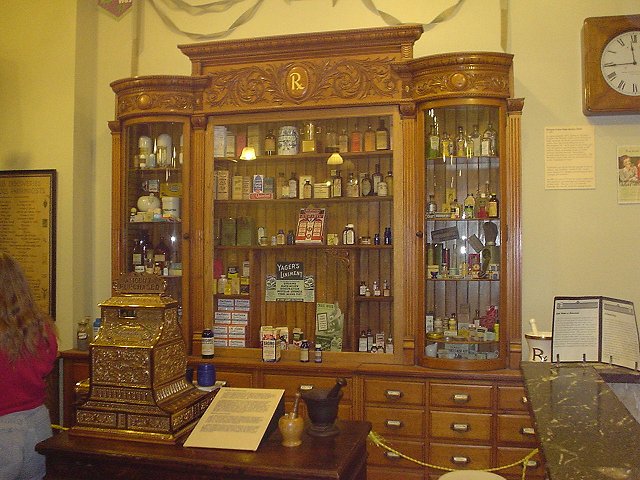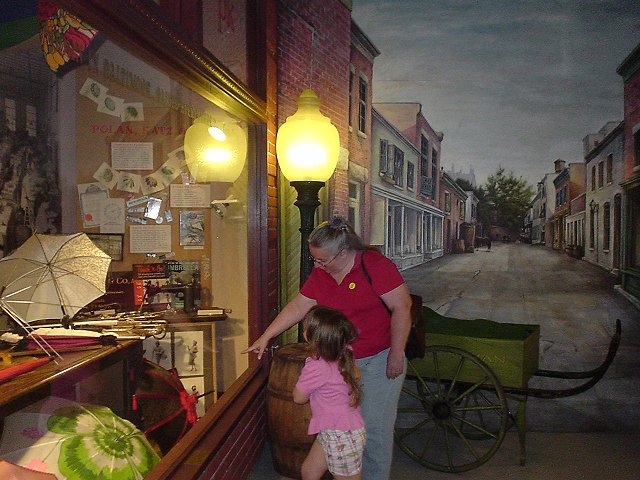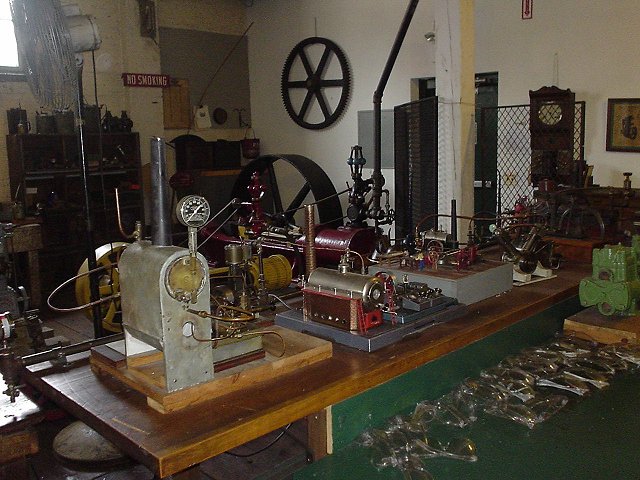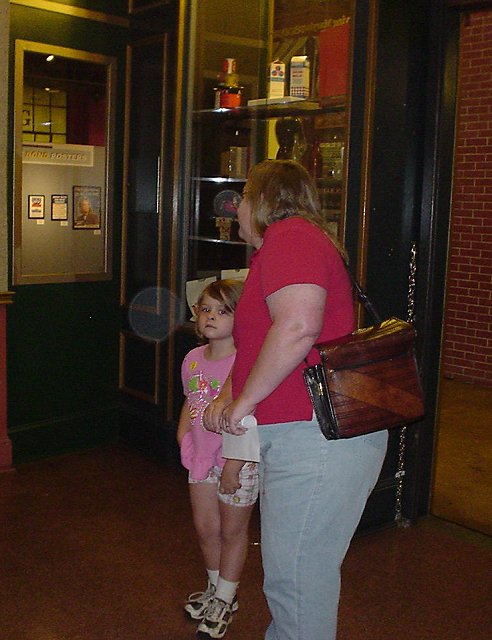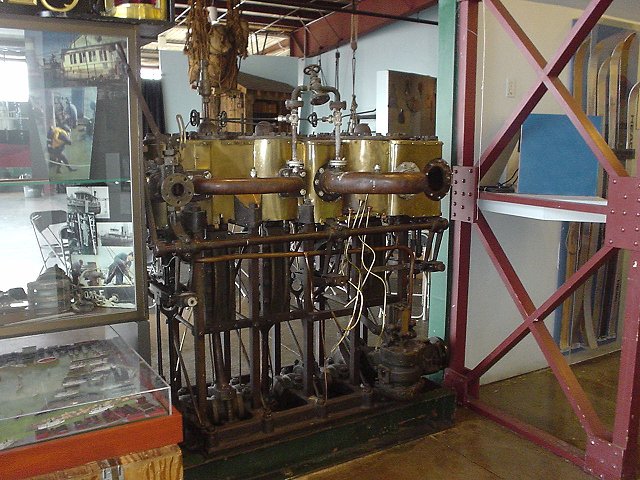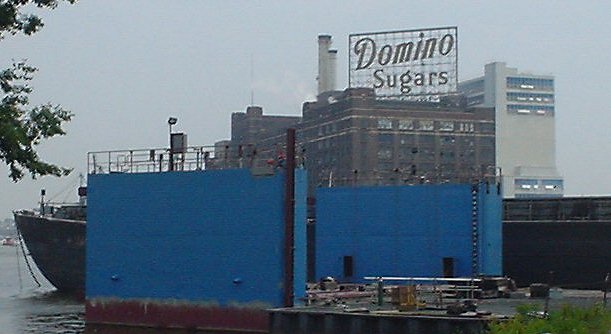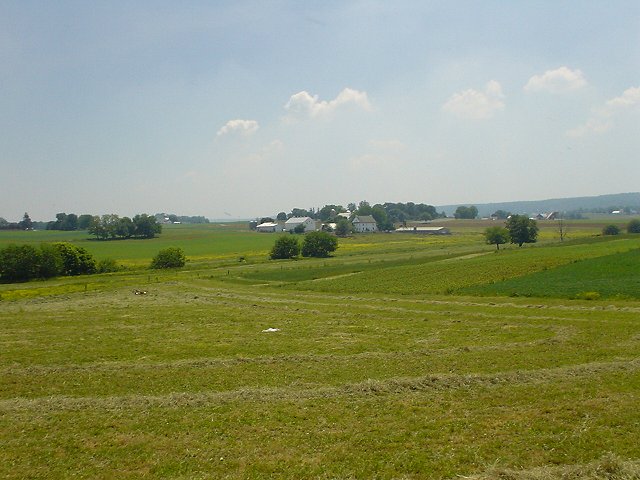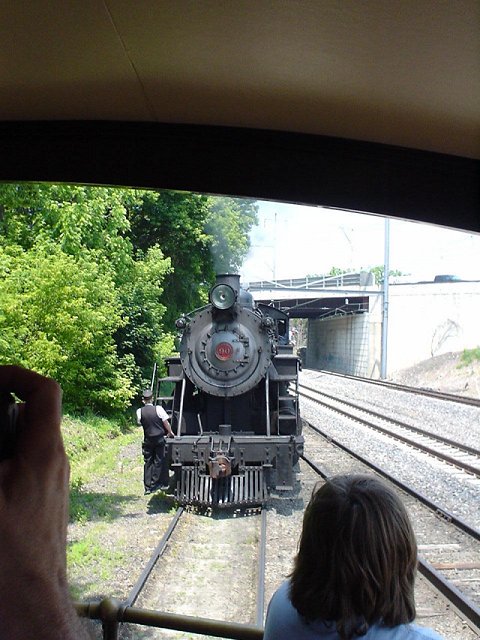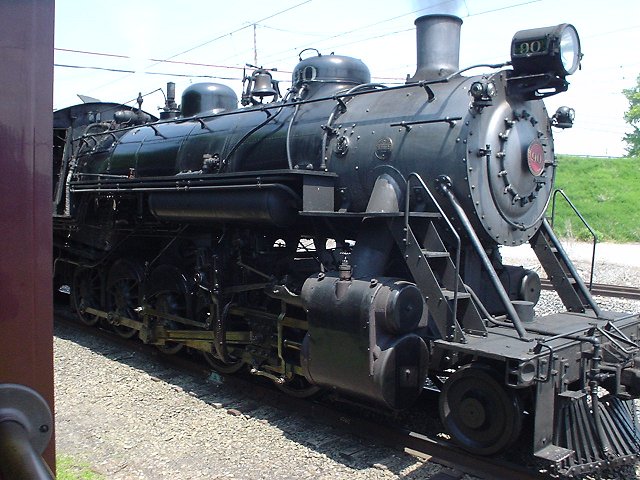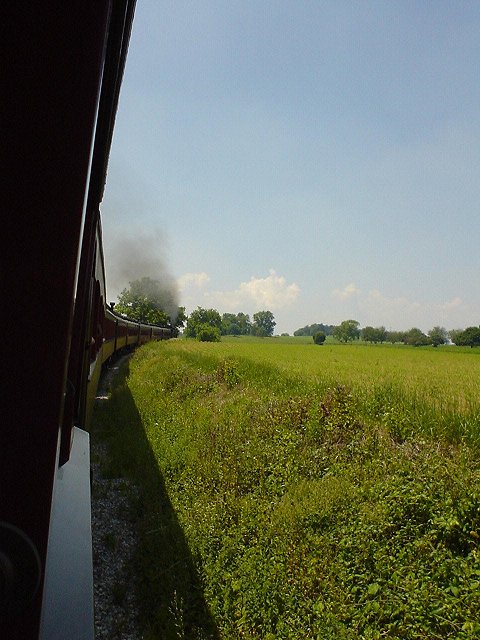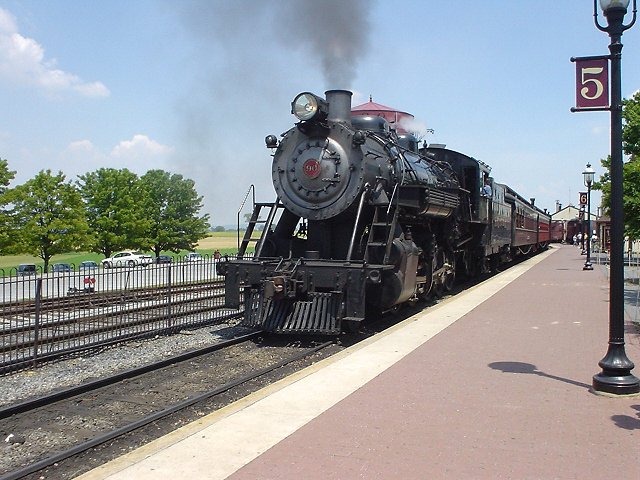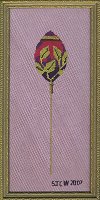We didn’t get back to Fallston until almost time to dress for the first party of L’s reunion, an all-years event that also served as a farewell for the women’s field hockey coach, who was retiring after thirty-some years. One speaker almost brought down the house by pulling out and donning her hockey uniform of thirty years before, an awful mud-brown polyester tunic and bloomers. She also observed that unlike today, when facemasks are standard equipment, in the Old Days players only got to wear a face mask after they’d been smashed across the face once.
I dressed more-or-less informally for the party, wearing kilt and poet’s blouse, and at once found myself in demand by all the photographers. I don’t suppose they get very many Scots coming to reunions, since the school is mostly upper-class and Jewish. The upper-class part must have helped with the catering, as did having the caterer’s executive chef be a school alumnus, because the buffet was absolutely delicious. We got bœuf tartare garnished with cress, pepper-marinated beef tenderloin, and a selection of GOOD cheeses. For the goyim, the Reform contingent, and the more broad-minded Conservatives, there was also a Maryland crab dip that I didn’t sample.
After that whoop-te-do, Saturday was relatively calm. L’s brother and his girlfriend had flown down from Maine, so the entire family—L’s mother, L and her sister and brother, spouses and SOs, the five grandchildren, and even L’s grandmother, who is 95 and stone-deaf—were all together at one time, and there’s no telling when or whether THAT will ever happen again. It was my niece Kate’s birthday as well as almost-my-own, so L’s sister brought a box of steamed crabs and almost everyone sat down to have a crab feast. (Since I’m not allowed crabs, I had chorizo-onna-bun.) T caused a short flurry when, after insisting that she was only allergic to shrimp and lobster and was not either allergic to crabs, and then eating five or six of them, she broke out in a rash all over her face and arms. L put her to bed with a Benadryl tablet, and after an hour’s nap she was fine again. (I said she was so allergic to crabs, but she just would NOT be told. At least it was a mild attack.)
Saturday night I dressed up again—this time in the full Scots version of black-tie—for L’s class-year reunion party (Park School, Class of 1977) over in Pikesville. I was by far the most dressy person there (in truth, probably waythehell overdressed, but I treated it as a great joke and was having fun), and L’s classmates alternated between mirth and being impressed. Again, the photographers were all over me wanting poses. The group was pretty high-powered: two judges, two doctors, several lawyers, a financier, one woman who alternates working for the World Bank with making stone sculptures and jewelry design, and some others I failed to catch. The woman who works for the World Bank told about being one of the employees’ association executive committee who first told Paul Wolfowitz he had to resign a few weeks ago, and gave a vivid impression of the all the drama and meetings while he was being turned out. (She also, of all things, turns out to be a collateral descendant of Alfred Dreyfus, and was horribly offended when Wolfowitz was so crass as to quote “J’accuse” at her during one meeting. And she told a fascinating story about her father’s escape from France at the beginning of World War II, which might have been taken straight from the script for Casablanca.)
By and large I like L’s high-school classmates much more than I do my own, and I have a good time at her reunions. (After the disaster of my own twentieth, I refuse to attend any more with my class.) Still, it seems there’s always got to be one jerk in every crowd. Last night, it was someone’s husband who thought it was funny to set off his strobe flash directly in my eyes and blind me. He made me so mad that I not only snarled but bit, and by the time I was done with him he was falling all over himself apologizing, an effort that I found much too little, too late. (As my mother says, “‘Sorry’ doesn’t fix it.”)
Today’s been a mostly do-nothing day. L’s mother gave us her late husband’s pickup to replace Piet, and T is ferrying it back to Austin. This morning we loaded it with a long-case clock, a humpback pressed-tin trunk holding family papers and heirlooms, a pair of vintage sewing machines (Wilcox & Gibbs, and I didn’t have time to inspect them properly and find out just what we have), and a few other odds and ends. T drove to Smyrna, Tennessee today where she’s spending the night with a Mensan friend, and will get back to Austin sometime VERY late tomorrow. (It occurs to me I didn’t arrange for anyone to help her unload the clock; I hope she can find a friend. The clock is light—I picked it up by myself— but its height makes it hard to get through doorways.)
And that catches me up to date, finally. I don’t know what we might do tomorrow, since Tropical Storm Barry is falling apart over us at the minute and it’s been raining since morning, with more rain forecast Monday and Tuesday.
Cuidado con los mensajes del arboles. Fnord.

